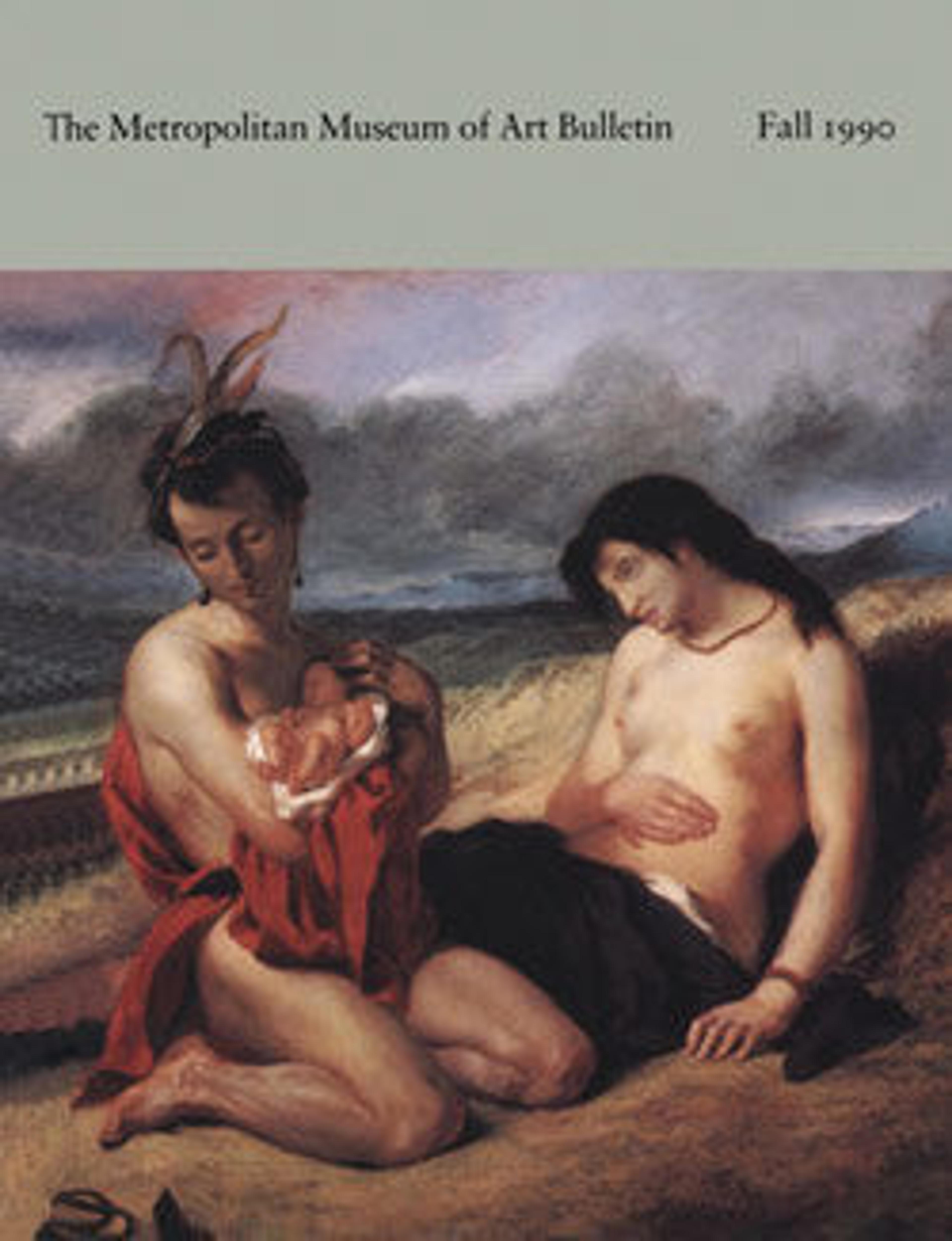Mastiff
Dogs were regularly represented in the arts of Mesopotamia from earliest times, and were particularly popular in the later second millennium B.C. in central Babylonia. This clay mastiff is hollow on the inside. It retains traces of polychromy on its body, and remains of inlay in its eyes. The animal’s forehead wrinkles, snout, teeth, and muscular shoulders are carefully depicted. A braided collar circles the dog’s neck, and its tail is shown folded around its right hind leg. There is a hole at the top of its head, which may have held a standard in antiquity, perhaps similar to that shown in a contemporary seal carving in the Metropolitan's collection (1985.357.44).
In the ancient Near East, dogs were often associated with Gula, the goddess of healing. This dog is depicted in a watchful pose – seated, with an open mouth and forward-facing ears, now partially broken – and may have been set up as a guardian figure as well as a standard-bearer. Kassite artists were particularly skilled in sculpting clay, creating both sculptures and three dimensional brick compositions.
In the ancient Near East, dogs were often associated with Gula, the goddess of healing. This dog is depicted in a watchful pose – seated, with an open mouth and forward-facing ears, now partially broken – and may have been set up as a guardian figure as well as a standard-bearer. Kassite artists were particularly skilled in sculpting clay, creating both sculptures and three dimensional brick compositions.
Artwork Details
- Title:Mastiff
- Period:Kassite
- Date:ca. mid-2nd millennium BCE
- Geography:Mesopotamia
- Culture:Kassite
- Medium:Ceramic, paint
- Dimensions:16 11/16 × 7 15/16 × 14 3/16 in. (42.4 × 20.2 × 36 cm)
- Credit Line:Purchase, The Charles Engelhard Foundation Gift, 1989
- Object Number:1989.233
- Curatorial Department: Ancient West Asian Art
More Artwork
Research Resources
The Met provides unparalleled resources for research and welcomes an international community of students and scholars. The Met's Open Access API is where creators and researchers can connect to the The Met collection. Open Access data and public domain images are available for unrestricted commercial and noncommercial use without permission or fee.
To request images under copyright and other restrictions, please use this Image Request form.
Feedback
We continue to research and examine historical and cultural context for objects in The Met collection. If you have comments or questions about this object record, please contact us using the form below. The Museum looks forward to receiving your comments.
